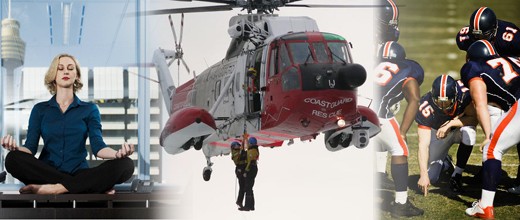Website sections:
Current section's content:
- You Can Manage and Program Creativity
- Creative Abilities and Creative Thinking Skills Management
- Briefly About CreativityModel Method Usage
- CreativityModel Method Usage Opportunities and End-User License Agreement
- Current Version of CreativityModel Method
- CreativityModel Method Version Changes
- CreativityModel Method Glossary
- CreativityModel Method Abstract
- Explanation of the Method's Component Parts and How the Component Parts Interact
- Explanation of How the Method's User Achieves Results
- CreativityModel Method - Generate Dots, Connect the Dots
- CreativityModel Method Usage Areas
- The Artist in You
- Growth of the Artist in You
- The Result Getter in You
- Applying the Result Getter in You
- About Choice Supported Creativity Usage
- The Problematic Side of Business Creativity
- Creativity Management and Business Creativity
- Sales CRM Software Development Example
- Why Does Creativity Management Matter and What Can You Do About This?
- Goal Oriented Creativity Management and CreativityModel Method
- Goal Oriented Creativity Management and Your Personal and Professional Life
- Teenager, Version 1 - Confusion
- Teenager, Version 2 - Life Management and Career Development
- Managers, Version 1 - Zigzagging Business Development
- Managers, Version 2 - Innovation Management and New Product and Service Development
- The President, Version 1 - Some of It Did Happen
- The President, Version 2 - Self-Expression, Conflict Resolution, Creativity and Leadership
- CreativityModel Method Development Background
- Further Development of CreativityModel Method




















Managers, Version 1 - Zigzagging Business Development
This article is the fourth part of a seven article series on neglecting versus using goal oriented creativity management principles.
- This series consists of an introductory article, and three sets of articles, each of which contain two versions:
- Teenager, Version 1 and Teenager, Version 2;
- Managers, Version 1 (current article) and Managers, Version 2; and
- The President, Version 1 and The President, Version 2.
- In addition, two software development related articles on this website form a somewhat similar pair.
- Sales CRM Software Development Example article describes a choice supported creativity driven decision making process in IT, in situations where goal oriented creativity should be used instead. What CRM Sales Software Is Right For You? article describes a goal oriented creativity driven software selection and development process.
These articles have a common thread that is related to CreativityModel Method usage. From a teenager to an employee, to president of a company or a country - CreativityModel Method usage principles are the same. So, your learning to use them is worth the effort, because you can use these creativity management skills throughout your life.
Both Version 1 and 2 are examples of projects that require goal oriented handling. Each Version 1 is an example of a scenario where goal oriented creativity principles should be used, but are not being used. This creates consequences. That's just the way life is, whether we like it or not.
Each Version 2 is the same scenario, except that this time goal oriented creativity is being used. The consequences are different, too.
- So, when you read this material, ask yourself, which version do you identify with more, Version 1 or 2?
- Do you recognize any of the people you know in these versions? In version 1 or 2?
- Both goal oriented creativity usage and self-expressive creativity usage can be learned and taught. Keeping this in mind, where are you now, and where do you want to be, as far as your own goal oriented creative thinking skills usage is concerned? Do you know anybody in your life who would benefit from improving his or her creativity management skills?
Zigzagging Business Development
Similarly to Teenager, Version 1 and Version 2, the next examples, Managers, Version 1 and Version 2 address mismatched usage of choice supported creativity and goal oriented creativity. No matter who you are, it is very likely that you have to deal with these issues at some points in your life as well.
CreativityModel Method's principles apply, whether CreativityModel Method is used in personal life or in professional environments. Further, these principles apply equally well to individuals who are part of a team or a workgroup. If a team environment is managed so that choice supported creativity is used in situations that call for goal oriented creativity usage (because goals need to be set and achieved), the results are messy and tend to affect adversely people's professional lives and income earning opportunities.
The Participants
We will follow a group of managers who work for an advertising and marketing company.
- Mark is the CEO. He is a sales person by nature and is very good at it. He is a good improviser, networker and closer, and a "doer" who likes to act. He prefers selling to using market research or planning. He started this company and has run it largely the same way - by improvising, networking and selling whenever and wherever he can.
- Mark prefers to manage through delegating, and he has been building and growing the company successfully by doing so. He considers himself knowledgeable in different business management areas, but not necessarily an expert in any of them.
- Bob is the company's Sales Director. He has known Mark for a long time and considers himself Mark's good friend. Bob is little bit more of a planner than Mark is. Further, Bob likes to look at sales interactions as processes with identifiable steps. As sales manager, Bob prefers a hands on approach, so that he is familiar with different nuances and details of the ongoing sales processes.
- Ann is the Creative Director and Art Director. The company used to have different persons leading these functionality areas, and more than one art director. Now Ann is in charge of both areas. Further, the company is trying to embrace a more teamwork oriented creative style, and Ann is in charge of that work as well.
- Sally is the Marketing Director. She likes to balance analytical approaches with trial and error based acting on ideas and impulses. For example, she likes both to asses markets in terms of segments and their potential, and working with people who can create different solutions on the fly.
- John is the Operations Director. He likes to understand the big picture and how the individual parts fit into it, and he also likes trying out new ideas.
- John majored in English in college years ago, with the focus on creative writing. After college he went to work for his girlfriend's father as advertising sales person, and later was promoted to that company's Operations Manager. There he met Bob, who years later asked him to join this current company.
- John considers sales to be the "king of the company" because it is the only actual revenue generating function, while in his opinion every other area is a cost center. He gets along very well with Bob, and also with Mark.
- Evelyn is the Finance Director and Controller. She has joined the company relatively recently. In her opinion analyzing data can provide both answers and ideas for new opportunities. She respects entrepreneurial people, and likes the idea of working for a mid-sized company. However, she is starting to realize, that even more important to her is to work for a company, where she can see that the management members have a clear sense of direction.
- Andy is the IT Director, and Bob's brother-in-law. He is very good at IT product and service selection and network administration, but doesn't like to get involved in other business management areas. Ideally, he would like to run the IT Department as independently as possible, and as far as he is concerned, other management team members can do the same in their respective areas of responsibility.
- Andy has received requests to provide better support for digital forms of advertising. He is ambivalent about these requests. He could look into different relevant options more than he has done so far. However, the company seems to be going in other directions instead. So, he has a "wait and see" attitude in these areas.
- Jane is the head of the HR Department. She has experience in accounting, bookkeeping and office management as well. The company that she worked for previously went bankrupt because of excessive spending and borrowing and cash flow problems. As HR person, deep down Jane feels partially responsible for that, even though she acknowledges that while she was involved in hiring people, she was not responsible for creating that company's "spend now, pay later, if ever" company culture. She is happy at her current company, but is somewhat anxious about the company's expansion plans.
In addition to the people listed above, the company employs other people in creative services, media planning, client services, project management and sales and marketing related areas.
The Situation
The company has tried to hold on to selling traditional forms of advertising for as long as possible. When it tried to integrate into its product and service offerings more Web-based, digital forms of advertising and marketing, all sorts of problems ensued.
Now the company is considering different options for expanding its product and service offerings.
At the Meeting
Mark, the CEO, is considering making a deal with a promotional products and branded merchandise sales company that is offering very appealing terms. Mark, Bob and John have met with the branded merchandise sales company representatives.
Mark has already met individually with different management team members of his company as well. Now he is holding a meeting, describing to all the managers the deal that he wants to make with the promotional products and branded merchandise sales company. He is hoping to win over the management team members, so that they will support this new direction.
After his presentation, Mark opened the meeting up for questions or comments.
Ann asks, "We have been trying to expand our digital capabilities. How is that direction related to this deal?"
Mark responds that "It's not necessarily related to it. Instead of putting all the emphasis on finding our place in the digital world, I am suggesting that we can build company growth related security through diversifying our product and service offerings."
Bob says that "I think that we are largely a sales company. I mean, that's our strength. So, with this deal we are building on our existing capabilities."
Sally says, "Yes, but aren't we again hopping around here? Over the years, we have been trying this and that and the third thing, without really focusing on figuring out how to make any of these areas work for us."
Mark says, "Well, I think that this is a bit harsh. I would rather see us selling and finding out that way what works and what doesn't work for us. After all, that way we can make money in the process, too."
Ann asks, "So, maybe we could concentrate on selling our digital services?"
Bob responds, "We are doing that, too, but we aren't particularly competitive in these areas."
Ann says that "We can become more competitive in these areas, and I think we really should put more emphasis on this."
Mark says that "We sure will expand our digital service offerings as well. Now, let's come back to this deal that we have here. We have a good opportunity to increase our revenue by capitalizing on our strengths. More revenue means more opportunities for expansion in other areas as well."
Mark continues by going over some of the highlights of the proposed deal again.
Habitually, Mark sells to his co-workers the concept that he likes. He tries to turn objections first into selling points, and then into closing opportunities.
John asks couple of questions about how the deal will affect the company's operations.
Thereafter Evelyn asks, "So, what are the next steps? What do you want each of us to do?"
Mark says that first of all he wants to know if there are any objections to this deal that need to be addressed right away. "I will discuss any details with each of you, and then we will have a management team meeting again. We need to move relatively fast here, because some of the favorable terms that we have negotiated for us will not be on the table forever. Further, we need to give our sales people more earning opportunities as well, and we don't want to wait with that for too long either."
So, this meeting ends with the participants agreeing on setting up individual follow-up meetings with Mark.
After the Meeting
Sally does some Internet research on the prospective sales partner company. She finds out that the company requires its business partners to move large quantities of merchandise on a regular bases. Business partners that cannot sell the merchandise have to pay penalties, or have to buy the merchandise themselves.
At the meeting with Mark, Sally asks about this. Mark responds that the terms of the business agreement between their companies have not been finalized yet. Some of the terms that they have negotiated so far are very favorable for their company. Not all agreements are alike, and he would not make an agreement that can hurt or jeopardize their company.
Mark then asks Sally to work on a marketing strategy for the proposed merchandise.
Sally promises to do so, but also asks Mark another question. "We are providing branding services, but it seems to me that we don't use these services for our own company's development. Just like we tell our customers, it would benefit us to work out a focus, what we want to achieve as a company and how we will achieve it."
Mark responds that here is a good opportunity for Sally to work out a marketing strategy that will integrate different products and services that their company plans to offer.
Next Mark meets with Andy, to get an update on where the IT stands on digital service providing areas. Andy discusses some options with Mark and, as he has done in the past, tells Mark that if something is needed, just let him know. Andy has had several digital service expansion discussions with Ann and Sally, too. Part of the problem is that the kind of expansion that Ann and Sally are interested in costs more than Andy can fit into the existing IT budget. Andy emphasizes that the current fiscal year's IT budget cannot really be stretched much further.
Together with Bob, Mark meets also with Ann, who has apparently spoken with Sally, and voices her concerns about lack of focus on digital service providing. Focus on sales is obviously always needed, but aren't they above all an advertising and marketing company?
Mark responds that "Of course, we will still be an advertising and marketing company. We will simply expand our product and service offering, and that diversification can help us to increase our revenue and to build a more stable cash flow structure."
Mark continues with praising the company's sales force. "We have a very capable sales force. Give them more to sell, and they will sell more. This is pretty simple and we don't need to complicate it too much. We can give this a try and I'm asking for your support in doing so."
Mark meets also with Evelyn, who asks if there is a draft of the business agreement with the promotional products and branded merchandise sales company, and if so, then when can she see it. Mark promises to provide the agreement's draft as soon as it will be available.
Mark meets with Jane as well, who asks if the company plans to expand its sales force and hire more people in other areas in conjunction with the proposed deal. Mark says that at least initially they plan to use their existing sales force and do not plan to hire more people.
At Lunch
Evelyn has lunch with Jane, Sally and Ann. She wants to know what others think about the proposed deal and company development directions.
At first, Ann, and especially Sally seem to be probing Evelyn's thoughts on the same topics. Evelyn says that while the company has a great sales team, the expected additional revenue may not necessarily mean increased profitability. In addition, she says that she is concerned about the information that she found about their new business partner and its past business practices. If their company has to start making large payments to their business partner, regardless of the actual inventory sold, then that can create substantial cash flow problems for the company. Factoring and other methods of borrowing come at a cost, which in turn decreases profitability and will eventually affect everybody's bottom line and wallet.
It turns out that everybody at the table has done some research on their proposed new business partner. They all seem to be somewhat uncomfortable with the information that they found. Further, nobody has seen the draft of the business agreement between the two companies yet.
Evelyn asks, "So, what is it with the dispute over the growth in company's core areas?"
Sally and Ann look at each other briefly, and Sally says, "I think that this question, and the way we have been trying to expand our operations, are at the heart of our problems."
She pauses briefly, and then continues. "Of course we can operate so that we integrate different business units in a mutually supportive manner into a company that functions well. However, we go in one direction, and then in another, and then yet in another, and none of them work out for us. We have had to support this zigzagging by having lower profits than we should have, and by directing cash flow from our core areas to support other activities."
Evelyn asks, "But why do we do this?"
Ann says, "Because that's how Mark likes to work. He likes going in different directions and proceeding without working out and implementing longer term plans. He used to say that plans change anyway, especially the longer-term ones. So, we don't want to put too much time and effort into planning. Instead, we want to be good at doing and selling."
Sally says that, "And you know what - it turns out that because Mark is in charge, we all have to work the same way."
Ann continues by saying that "Our core business areas need much more attention and resources. We need to offer services that are based on much more interactive results than what we offer now. We need to be able to target consumers on a much more individual level than we do now. We have a good creative team, but we can complement it with using crowdsourcing. We need to be much more agile and flexible than we are now. As a company, we want to do creative work, but we need to be creative about how we work as well.
Sally and I have had numerous discussions on these topics with other directors in the past. I think that our managers have a pretty good grasp of the problems that we are facing - but despite of that, we haven't worked out any real solutions for handling them. Obviously, as an advertising and marketing company we can develop our own niche and work out the problems that we are facing. However, as long as we continue pretending that these problems do not exist and do not affect us, things will not get better."
Evelyn is surprised by the intensity of the discussion. She and others agree that they need to see the draft of the business agreement between the two companies, and should have another lunch meeting after that.
The Deal
Mark works with his company's management team members. His company makes the deal with the promotional products and branded merchandise sales company.
The deal doesn't make or break Mark's company. It helps in some areas, but creates new problems in others.
The company continues to search for new opportunities. Because of its highly capable sales team, the company is still profitable, but has an increasing rate of employee turnover.
The future seems even more uncertain than before.
This doesn't bother Mark too much. He is used to operating intuitively and by improvising when and where needed. Some of his company's management team members and employees are more bothered by this than others.
The Bottom Line
This story could have continued in different ways. Either way, the following CreativityModel Method usage related principles are relevant to it, and to many other similar situations:
- Business development and also business management can be viewed as long-term, ongoing projects that require goal oriented handling.
- In business and in most other professional environments salaries and wages have to be paid, which means that different goals and objectives have to be set and achieved. Hardly ever a company exists without needing to set and achieve goals.
- Project structure is also a leadership vehicle. When you handle goal oriented projects, use goal oriented creativity for putting together the project's structure. Stay away from using choice supported creativity for putting together the project's structure. Usage of choice supported creativity in an environments that requires goal oriented handling can easily result in a chaotic mess.
This works in business environment and here's why.
You can start and run small and entrepreneurial companies with relatively little planning, especially if you have a very capable salesperson in the startup team. However, the bigger and the more diverse is the company (or a team or a workgroup), the more helpful and necessary it becomes to use goal oriented business development structure that is also communicated well to the participants.
Project goals and milestone goals communicate what the management intends to achieve. This reduces uncertainty and helps individual employees and managers to make decisions. Goals are like handles that can be used for climbing towards the overall objective.
Different principles and techniques exist for setting goals. In order to achieve goals, you need a structure that leads to the achievement of the goals.
If you put together the structure from the goals towards the starting point, it is more likely that you are forced to think through the individual steps more thoroughly. This results in steps, or milestones, that are more compatible and realistic, and also helps to handle the changing circumstances during the implementation of the planned structure.
The objective of the planning process is not to have a structure that can be implemented unchanged. To put it differently, the planned structure and the implemented structure do not have be perfect matches. In reality they hardly ever are perfect matches for achievement of long-term goals. However, if the goals of individual milestones are set so, that the participants know and understand what needs to be achieved and are allowed sufficient flexibility for achieving the goals, the planning process serves the participants and survives the reality tests as well.
Further, individual milestone goals can be changed as well, either out of necessity or when better alternatives emerge. However, the new goals have to support and fit into the rest of the structure. So, when changes are made, the entire structure has to be thought through.
Within the goal oriented structure enough room can be left, and in most instances should be left, for flexibility and for choice supported creativity usage. The specific details depend on the nature of the undertaking and on the management's preferences.
Choice supported creativity is more self expressive, is largely based on trial and error, and allows far greater degrees of freedom of movement in any direction and combinations of components in different ways. This creative approach helps to generate diverse outcomes, from which the most suitable solutions can be selected.
So, put together goal oriented structures and use choice supported creativity within these structures - both personally and in teamwork settings.
Working the other way around is what will cause you problems. That is, using choice supported creativity for putting together goal oriented project's structure, or business development and business management structure, increases uncertainty, while lowering the probability of producing sustainable progress or success.
If you have questions or comments about this, let me know. By asking questions and making comments you will benefit other people as well.

